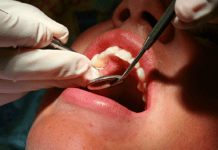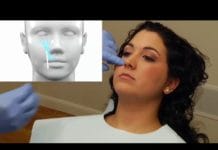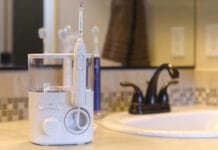Need CE? Check Out the Self-Study, Peer-Reviewed CE Courses from Today’s RDH!
Test your Pregnant Patient Knowledge
Which of the following local anesthetics may be used during pregnancy?
Though lidocaine is the most used local anesthesia during pregnancy and is considered the safest, bupivacaine and mepivacaine can be used with caution. Anesthesia with and without epinephrine is safe during pregnancy; however, local anesthesia without epinephrine is preferred. There is a risk of fetal bradycardia with the use of mepivacaine and bupivacaine, which is what warrants the need to use with caution.1-3
1. American Academy of Pediatric Dentistry Reference Manual. Use of Local Anesthesia for Pediatric Dental Patients. Pediatr Dent. 2017/18; 39(6): 266-272.
2. Oral Health Topics. Pregnancy. (n.d.). American Dental Association. Retrieved from https://www.ada.org/en/member-center/oral-health-topics/pregnancy
3. Kurien, S., Kattimani, V.S., Sriram, R.R., et al. Management of Pregnant Patients in Dentistry. J Int Oral Health. 2013; 5(1): 88-97. Retrieved from https://www.ncbi.nlm.nih.gov/pmc/articles/PMC3768073/
Radiographs are considered safe for pregnant patients with abdominal and thyroid shielding during which stage of pregnancy?
According to the American College of Obstetricians and Gynecologists' opinion statement in 2017, "Patients often need reassurance that prevention, diagnosis, and treatment of oral conditions, including dental X-rays (with shielding of the abdomen and thyroid) … [is] safe during pregnancy."1
Additionally, the American Dental Association supports this stance as well. Radiographs are considered safe for the pregnant patient, at any stage during pregnancy, when abdominal and thyroid shielding is used."2
1. Oral Health Topics. X-rays/Radiographs. (n.d.). American Dental Association. Retrieved from https://www.ada.org/en/member-center/oral-health-topics/x-rays
2. Oral Health Topics. Pregnancy. (n.d.). American Dental Association. Retrieved from https://www.ada.org/en/member-center/oral-health-topics/pregnancy
Fluoride varnish is considered safe during pregnancy.
Topical fluoride is assigned to category B by the FDA. Additionally, topical fluoride is not considered teratogenic. Therefore, if the need has been established due to high caries risk or erosion, topical fluoride varnish is recommended during pregnancy.
Fluoride Topical Pregnancy and Breastfeeding Warnings. (2021, March 11). Drugs.com. Retrieved from https://www.drugs.com/pregnancy/fluoride-topical.html
Pregnant patients are at an increased risk for dental caries. This is likely due to physiological alterations of the saliva during pregnancy.
In a study evaluating the prevalence of oral lesions and measurement of salivary pH, the authors found, "Salivary pH was observed to progressively decrease from the control group to the first trimester group, through to the third trimester group." The reason for the decreased pH level in saliva of pregnant patients was determined to likely be due to a decrease in the buffers of the saliva. The alteration of saliva composition is associated with the hormonal changes during pregnancy.1-2
1. Naveen, S., Asha, M. L., Shubha, G., et al. Salivary Flow Rate, pH and Buffering Capacity in Pregnant and Non-pregnant Women - A Comparative Study. JMED Research. 2014; 2014(2014). Article ID 506946. DOI: 10.5171/2014.506946. Retrieved from https://ibimapublishing.com/articles/JMED/2014/506946/506946.pdf
2. Jain, K., Kaur, H. Prevalence of Oral Lesions and Measurement of Salivary pH in the Different Trimesters of Pregnancy. Singapore Med J. 2015; 56(1): 53-57. doi:10.11622/smedj.2015010. Retrieved from https://www.ncbi.nlm.nih.gov/pmc/articles/PMC4325572/
Children of mothers who have high levels of untreated dental caries are more than three times as likely to have cavities as a child.
A comparative study published in JADA found that "Mothers' oral health status is a strong predictor of the oral health status of their children." Not only did this study find a correlation between caries rate and children's oral health, but it also determined a similar relationship between tooth loss in pregnant mothers and increased rates of dental caries in their children. Therefore, the authors determined that "high levels of untreated caries or tooth loss among mothers is a strong indicator of greater dental caries in their children."
Dye, B.A., Vargas, C.M., Lee, J.J., Magder, L., Tinanoff, N. Assessing the Relationship between Children's Oral Health Status and that of Their Mothers. J Am Dent Assoc. 2011 Feb; 142(2): 173-83. doi: 10.14219/jada.archive.2011.0061. PMID: 21282684. Retrieved from https://pubmed.ncbi.nlm.nih.gov/21282684/
Pregnant patients with periodontitis have an increased risk of which of the following adverse pregnancy outcomes?
Multiple studies have indicated strong evidence that periodontal pathogens can translocate from the periodontal tissue to the fetoplacental unit and initiate metastatic infection, which contributes to the multiple adverse pregnancy outcomes, including preeclampsia, low birth weight, and preterm birth.
Bobetsis, Y.A., Graziani, F., Gürsoy, M., Madianos, P.N. Periodontal Disease and Adverse Pregnancy Outcomes. Periodontol 2000. 2020 Jun; 83(1): 154-174. doi: 10.1111/prd.12294. PMID: 32385871. Retrieved from https://pubmed.ncbi.nlm.nih.gov/32385871/
Orally derived organisms associated with periodontal disease have been found in the placenta of pregnant women. These organisms could cause direct tissue damage or mediate maternal immune response that impairs the growth of the developing fetus, thus causing low birth weight.
A review published in the American Journal of Obstetrics and Gynecology found PCR and histology tests detected periodontal pathogens in placental tissue. Fischer et al. speculate that adverse pregnancy outcomes associated with periodontal pathogens are associated with direct tissue damage and/or interference with maternal immune response. Fischer et al. go on to state, "Placental colonization with periodontal pathogens thus potentially represents the missing link between periodontitis and adverse pregnancy outcomes."
Fischer, L.A., Demerath, E., Bittner-Eddy, P., Costalonga, M. Placental Colonization with Periodontal Pathogens: The Potential Missing Link. Am J Obstet Gynecol. 2019 Nov; 221(5): 383-392.e3. doi: 10.1016/j.ajog.2019.04.029. Epub 2019 Apr 30. PMID: 31051120; PMCID: PMC6821581. Retrieved from https://pubmed.ncbi.nlm.nih.gov/31051120/












